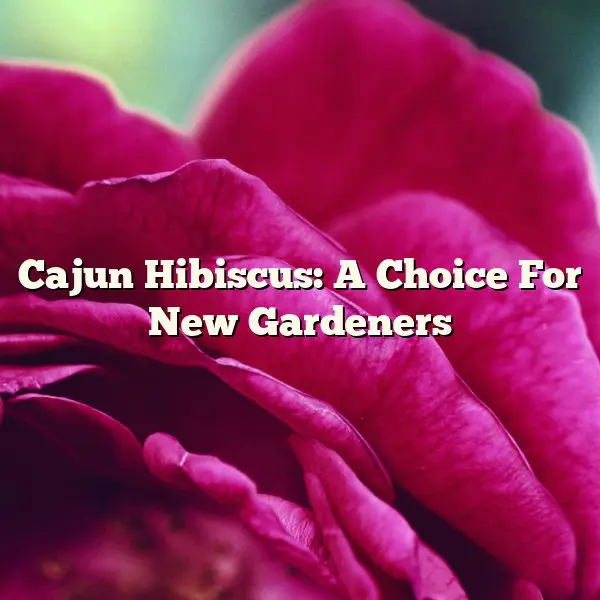New gardeners may be intimidated by the extravagant color of cajun hibiscus, but they are an ideal plant for a new gardener interested in growing flowers with vibrant color. Some people choose to grow these beauties in pots for ease of moving into the house during the winter season. They offer a good showing for the new gardener who appreciates color and an appealing scent.
Many designers look for a pop of color to add a cheerful focal point to a room, or a garden designer might choose to use flowers for the same purpose. Hibiscus are a popular choice because they come in a wide array of vivid oranges, reds and yellows. They are perennials and will return year after year without replanting. This is an advantage to many new gardeners who do not want to make the commitment of planting annuals every season.
When you are considering where to locate your plant, consider the need for well drained soil and a lot of sun. You may only plant outside if the temperature in your area remains above forty five degrees Fahrenheit as temperatures below this are incompatible with this species. Avoid selecting a place with excessive wind while getting roots established as well.
It might be a good idea to water these plants consistently, without soaking them. As temperatures fall, less water is needed for good health. Over watering can cause root rot and you might lose the entire plant. If the leaves are falling off as a natural part of ex-foliage, that is possibly a good sign to reduce watering for the time being. Both under watering and over watering are detrimental to this type of tropical plant.
Heavy fertilization is a key element of growing hibiscus, especially in a pot. A fertilizer too high in phosphorus can be harmful to the plant however. It may be a good idea to consult with a salesperson at your local nursery or read the label to be sure the fertilizer is recommended for your species. Some people add a layer of mulch over the fertilizer to slow the break down to the roots.
Some insecticides may be too harsh for the petals and leaves. Read instruction labels carefully to avoid stressing the plant. Some mites and spiders can be treated by applying pesticide to the underside of leaves only. This may reduce the risk to the plant and handle the problem as well.
Eventually, the new gardener will have to consider whether his plant need to be transferred to a new container. One clue to look for is whether the roots are touching the walls of the existing pot. If so, it may be time to move it to a new home.
New gardeners who are looking for colorful and fragrant plants may do well to consider the cajun hibiscus. They can be grown in pots for climates that have colder winters and brighten up the deck or patio year and year with their show stopping color. Following a few basic guidelines of how to water, fertilize, and apply insecticide correctly will help the new gardener increase their success rate for growing these tropical beauties.
You can visit the website www.herbalremedieshq.com for more helpful information about Cajun Hibiscus For New Gardeners



